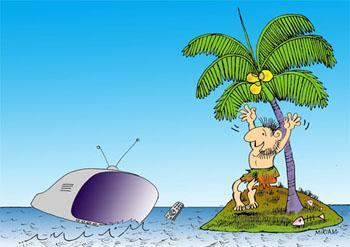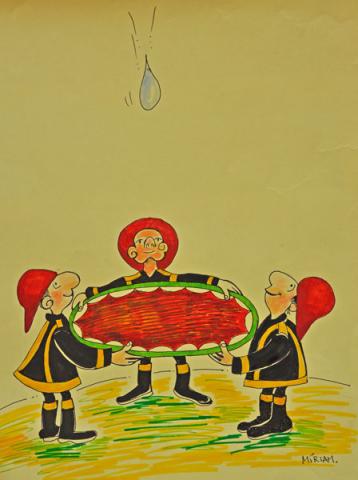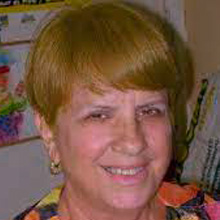Hoy voy a desarrollar este vis a vis con alguien que quiero mucho. Con una gran amiga en lo personal: Miriam Margarita de la Caridad Alonso Cabrera. O simplemente Miriam, como firma sus obras.
Debo decir que es graduada de la Academia de Bellas Artes San Alejandro en 1969 y Licenciada en Periodismo, en 1978, y ha laborado toda su vida artística como caricaturista, diseñadora y ahora subdirectora en la publicación humorística cubana “Palante”.
Fue la primera mujer caricaturista cubana que obtuvo un galardón internacional, en un concurso convocado en Italia. Premiada en diversos eventos ganó el Primer Premio de Humor Costumbrista Salón Nacional de la Upec (1993) y el Gran Premio del Primer Salón de Humorismo Provincial “HERCAR” (2003), ambos en el ámbito nacional. Internacionalmente los más destacados fueron la Medalla de Oro en una muestra colectiva cubana enviada al Salón Sátira por la Paz, en la antigua Unión Soviética, y el Premio colateral del Salón Bordighera, en 1984.
Ha realizado exposiciones personales y sus obras formaron parte de exhibiciones colectivas, así como fueron incluidas en libros de humor gráfico y literario. Mirian representaba a Cuba en el grupo internacional Mujeres en el arte de la caricatura.
Pero comencemos ya el vis a vis…
PP: Mi queridísima Miriam, dime la verdad, ¿te gusta que te hagan entrevistas?
MIRIAM: Si las preguntas están buenas, sí.
PP: Bueno, espero no defraudarte. Empecemos. En este año 2009, ¿cómo ves el estado actual del humor en Cuba, en televisión, radio, teatro, literatura y gráfica?
MIRIAM: En la TV hay pocos programas humorísticos. En la radio el que sigue escuchándose con interés es el emblemático "Alegrías de sobremesa" con otro escritor que no es Luberta. Se puede decir que la salud del humor en el teatro es la mejor. En cuanto a la literatura y el humor gráfico siento que cayeron en detrimento por el poco espacio para publicar. Desde que yo empecé en el semanario PALANTE, a finales de los años sesenta, he sido testigo de las nacientes generaciones de humoristas gráficos que iban tomando los lugares de los anteriores. Ahora no veo la generación actual que irá a sustituir a los pocos que están publicando con calidad. Se ha perdido esa continuidad.
PP: Bueno, al parecer encontraste buena la primera pregunta, porque respondiste detalladamente. Me alegro. Ahora dime, no sé si sabes que en varios países de América Latina se dice: "mi país es un pueblo de humoristas", "en mi país, tú mueves una piedra y sale un humorista", etc., ¿en Cuba se dice lo mismo?
MIRIAM: Se dice más. Porque el pueblo tiene un temperamento humorísticos debido a la formación de la nacionalidad cubana, que es un verdadero ajiaco de caracteres y etnias. Creo que ese sentido del humor ayuda mucho a sobrevivir al cubano, a enfrentar las crisis.
PP: ¿Sabes que el gran Miguel de Marcos escribió una reflexión sobre el tema y asegura que el cubano es un ser triste en realidad y se cubre con esa máscara de risa, baile y fiesta para ocultarlo? Creo que se debería pronfundizar más en el punto, ¿no es cierto? Pero seguimos. Para ti, ¿es verdad la acuñada frase: "Es más fácil hacer llorar que hacer reír?
MIRIAM: No creo eso.
PP: Ahora por lo sucinta de tu respuesta, parece que no encontraste buena la pregunta. Y te entiendo, porque es muy trillado el tema. Lo que sucede es que le pregunto lo mismo a todos los colegas para reflexionar sobre el asunto en el libro que pienso hacer con estas entrevistas. Ahora, solo te digo, que para mí, si se elabora un arte de alta calidad, da igual si es drama o comedia, siempre es difícil. Pero a iguales condiciones, sí pienso que hacer reír es más difícil. Pero cambiemos el foco y vamos a personalizar un poco esto. ¿Cuándo decidiste hacerte humorista?
MIRIAM: Siempre he tenido un inocente sentido del humor. Desde que empecé a estudiar en la Academia de Bellas Artes San Alejandro, mis dibujos y pinturas eran decididamente humorísticas. Mi primer lugar de trabajo fue la publicación humorística PALANTE, ahí conocí a los mejores caricaturistas, los vi trabajar y comencé a publicar mis primeras viñetas y a participar con ellos en exposiciones y concursos. Ha sido un gran taller para mí y aún sigo ahí.
PP: Perdona que te rectifique, pero siempre te he admirado, como todo el mundo, por tu obra gráfica. Sin embargo, he leído cuentos tuyos y me han encantado también. Así que te considero una humorista completa. Y a propósito, ¿crees que el humorista nace o se hace?
MIRIAM: Nace. No es una vocación. No es una carrera. Es un modo de vivir, de existir.
PP: ¡Wow! ¡Qué pasión se te nota en esa respuesta! Pero no voy a entrar a debatir aquí, pero yo pienso que nace y se hace también, con diferencias, eso sí. Pero en otro momento lo discutiremos). Pero sigamos contigo. ¿Cuál ha sido el mejor y el peor momento de tu carrera hasta el día de hoy?
MIRIAM: Mi mejor momento fue en 1984 cuando me entregaron, en la Unión de Escritores y Artistas de Cuba, un Premio importante obtenido en Italia por un conjunto de caricaturas. Era la primera vez que una mujer ganaba un premio internacional como caricaturista en Cuba.
El peor, cuando perdí a mi esposo, el humorista Betán.
PP: Mi querido amigo y colega Betán. Disculpa por hacerte recordar ese mal momento. Pero sabes que donde quiera que esté ahora, está riendo, haciendo humor y viéndote con orgullo por tus triunfos como pionera de la caricatura en Cuba y deseando que siempre rías, como siempre. Dime algo sobre esto, como profesional del humor, ¿te ríes fácil? ¿Con qué tipo de chistes?
MIRIAM: Sí, me río con facilidad. Me gusta el chiste despejado, de fácil acceso. Lo demás, la élite, la grandilocuencia, lo dejo para los virtuosos.
PP: Ja, ja. Pero te contradices, porque he visto que a veces haces humor “virtuoso”. Y para seguir riendo, ¿alguna anécdota relacionada con tu profesión?
MIRIAM: Siempre recuerdo esta: Una vez el caricaturista Pitín y yo fuimos a hacer un reportaje sobre los problemas de los ómnibus en las terminales y paraderos de las diversas rutas que surcaban la Habana (no diré la zona). Llegamos y en la entrada nos preguntaron. “¿Ustedes son los compañeros de la empresa?” Y Pitín, que no oye nada bien respondió: “Sí”. Y nos dejaron pasar. Pitín había entendido, debido a su sordera, que si éramos “de la prensa”). Ya adentro, dijimos que veníamos a hacer un reportaje ¡y nos pusieron de paticas en la calle! ¡Hubo un robo espectacular y esperaban “a los compañeros de la empresa”.
PP: ¡El viejo Pitín! Ja, ja. Oye, ¿con cuáles colegas te identificas?
MIRIAM: Con Albert Uderzo, el dibujante de las historias de Astérix, el galo.
PP: Espectacular Uderzo. Me encanta. Bueno y para ir cerrando este “diáloco”, ¿qué le aconsejas a un humorista, a un colega? A mí, por ejemplo.
MIRIAM: ¿Que te puedo aconsejar? Sí el Maestro eres tú.
PP: Ja, ja. Gracias, querida Miriam, pero usted tiene de sobra para aconsejarme. Mil gracias por tu tiempo y atención. Solo te deseo mucha salud y que sigan tus éxitos. Ya te veré cuando pase por La Habana en algún momento y darte un abrazo grande como el que te mando ahora.




Interview with Miriam Alonso
By Pepe Pelayo
Humor is a way of life
Today I am going to “talk” with someone I love very much. With a great friend personally: Miriam Margarita de la Caridad Alonso Cabrera. Or simply Mirian, as she signs her works.
I must say that she graduated from the San Alejandro Academy of Fine Arts in 1969 and graduated in Journalism in 1978, and has worked her entire artistic life as a caricaturist, designer and now deputy director of the Cuban humorous publication “Palante”.
She was the first Cuban woman cartoonist to win an international award, in a competition held in Italy. Awarded in various events, she won the First Prize for Customary Humor at the Upec National Hall (1993) and the Grand Prize at the First Provincial Humor Hall “HERCAR” (2003), both at the national level. Internationally, the most notable were the Gold Medal in a Cuban collective exhibition sent to the Satire for Peace Hall, in the former Soviet Union, and the Collateral Prize at the Bordighera Hall, in 1984.
He has held personal exhibitions and his works were part of group exhibitions, as well as included in graphic and literary humor books. Mirian represented Cuba in the international group Women in the Art of Caricature.
But let's start "dialocating" now...
PP: My dearest Miriam, tell me the truth, do you like being interviewed?
MIRIAM: If the questions are good, yes.
PP: Well, I hope I don't disappoint you. Let us begin. In this year 2009, how do you see the current state of humor in Cuba, on television, radio, theater, literature and graphics?
MIRIAM: There are few humorous programs on TV. On the radio, the one that continues to be listened to with interest is the emblematic "Alegrías de sobremesa" with another writer who is not Luberta. It can be said that the health of humor in the theater is the best. As for literature and graphic humor, I feel that they fell to the detriment due to the limited space to publish. Since I started at the weekly PALANTE, at the end of the sixties, I have witnessed the nascent generations of graphic comedians who were taking the places of the previous ones. Now I don't see the current generation that will replace the few who are publishing with quality. That continuity has been lost.
PP: Well, apparently you found the first question good, because you answered it in detail. Glad to hear it. Now tell me, I don't know if you know that in several Latin American countries it is said: "my country is a town of comedians", "in my country, you move a stone and a comedian comes out", etc., in Cuba it is said the same?
MIRIAM: More is said. Because the people have a humorous temperament due to the formation of the Cuban nationality, which is a true ajiaco of characters and ethnicities. I think that sense of humor helps a lot of Cubans to survive, to face crises.
PP: Do you know that the great Miguel de Marcos wrote a reflection on the subject and assures that the Cuban is actually a sad being and covers himself with that mask of laughter, dancing and partying to hide it? I think the point should be delved deeper, right? But we continue. For you, is the coined phrase true: "It is easier to make people cry than to make them laugh?
MIRIAM: I don't believe that.
PP: Now from the succinct nature of your answer, it seems that you didn't find the question good. And I understand you, because the topic is very trite. What happens is that I ask all my colleagues the same thing to reflect on the matter in the book that I plan to make with these interviews. Now, I'm just telling you, for me, if you make high-quality art, it doesn't matter if it's drama or comedy, it's always difficult. But under the same conditions, I do think that making people laugh is more difficult. But let's change the focus and let's customize this a little bit. When did you decide to become a comedian?
MIRIAM: I've always had an innocent sense of humor. Since I began studying at the San Alejandro Academy of Fine Arts, my drawings and paintings were decidedly humorous. My first place of work was the humorous publication PALANTE, there I met the best cartoonists, I saw them work and I began to publish my first cartoons and participate with them in exhibitions and contests. It has been a great workshop for me and I am still there.
PP: Sorry to correct you, but I have always admired you, like everyone else, for your graphic work. However, I have read your stories and I loved them too. So I consider you a complete comedian. And by the way, do you think that comedians are born or made?
MIRIAM: Born. It is not a vocation. It's not a race. It is a way of living, of existing.
PP: Wow! How passionate you are in that response! But I'm not going to enter into a debate here, but I think that it is born and made as well, with differences, of course. But we will discuss it another time.) But let's continue with you. What has been the best and worst moment of your career to date?
MIRIAM: My best moment was in 1984 when they gave me, at the Union of Writers and Artists of Cuba, an important Prize obtained in Italy for a set of caricatures. It was the first time that a woman won an international award as a cartoonist in Cuba.
The worst, when I lost my husband, the comedian Betán.
PP: My dear friend and colleague Betan. Sorry for reminding you of that bad moment. But you know that wherever he is now, he is laughing, making humor and seeing you with pride for your triumphs as a pioneer of caricature in Cuba and wishing that you always laugh, as always. Tell me something about this, as a humor professional, do you laugh easily? With what kind of jokes?
MIRIAM: Yes, I laugh easily. I like the joke uncluttered, easy to access. The rest, the elite, the grandiloquence, I leave for the virtuous.
PP: Ha ha. But you contradict yourself, because I have seen that sometimes you do “virtuous” humor. And to keep laughing, any anecdotes related to your profession?
MIRIAM: I always remember this one: Once the cartoonist Pitín and I went to do a report on the problems of buses in the terminals and whereabouts of the various routes that crisscrossed Havana (I won't say the area). We arrived and at the entrance they asked us. “Are you the company's colleagues?” And Pitín, who doesn't hear well at all, responded: “Yes.” And they let us pass. Pitín had understood, due to his deafness, that we were “of the press”). Once inside, we said we were coming to do a report and they kicked us out on the street! There was a spectacular robbery and they were waiting for “the company's colleagues!”
PP: Old Pitín! Ha ha. Hey, which colleagues do you identify with?
MIRIAM: With Albert Uderzo, the artist of the stories of Asterix, the Gaul.
PP: Spectacular Uderzo. I love it. Well, to close this “dialogue”, what do you advise a comedian, a colleague? To me, for example.
MIRIAM: What can I advise you? Yes, the Master is you.
PP: Ha ha. Thank you, dear Miriam, but you have plenty to advise me. Thank you very much for your time and attention. I only wish you good health and continued success. I'll see you when I pass through Havana at some point and give you a big hug like the one I'm sending you now.
(This text has been translated into English by Google Translate)

